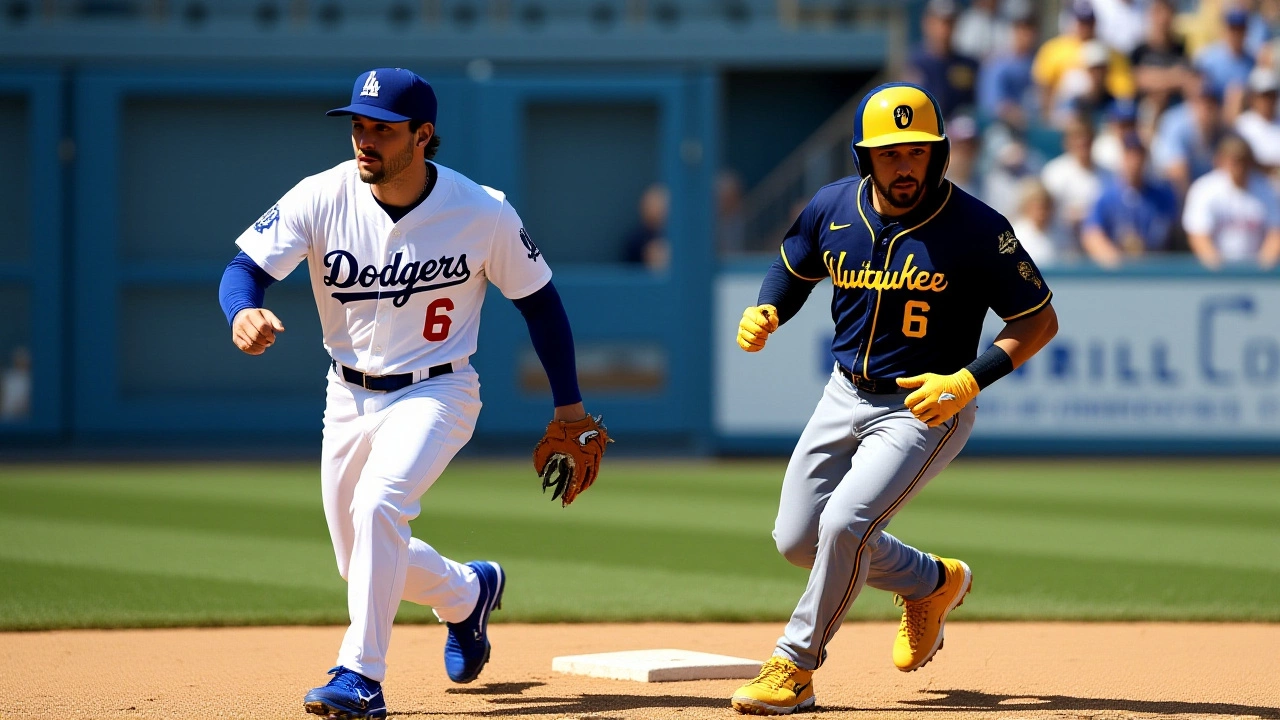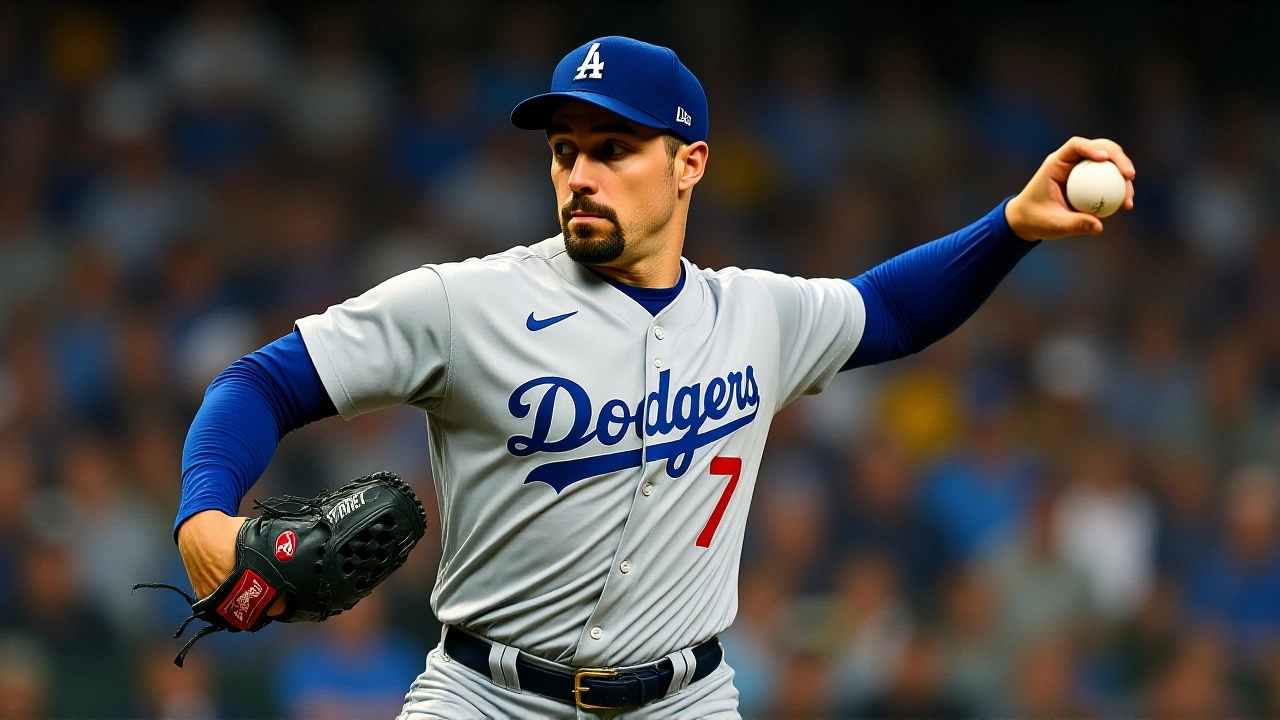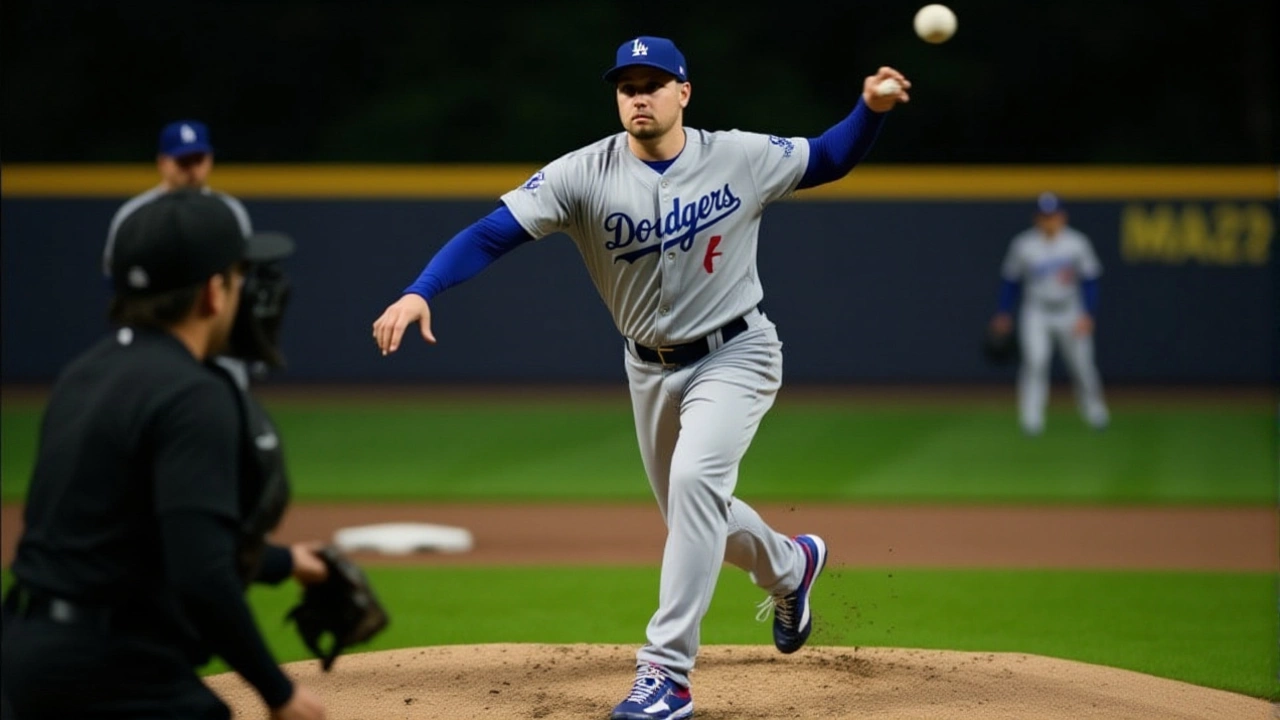Dodgers Seize 3‑0 NLCS Lead with Edman's Late Heroics

On Thursday, October 16, 2025, at Dodger Stadium in Los Angeles, the Los Angeles Dodgers downed the Milwaukee Brewers 3‑1 in Game 3 of the 2025 National League Championship Series, stretching the series lead to 3‑0. The winning run came when Tommy Edman, the Dodgers’ 30‑year‑old utility man, delivered a tiebreaking single off rookie right‑hander Jacob Misiorowski in the sixth inning.
Historical Context: A Chance at Back‑to‑Back Glory
This victory nudged Los Angeles within a single win of becoming the first defending World Series champion to reach the Fall Classic since the 2009 Philadelphia Phillies. The Dodgers, who captured the 2024 title in a dramatic seven‑game series, now eye the rare distinction of consecutive championships – a feat accomplished only by the 1998‑2000 New York Yankees era.
For the Brewers, the pressure is palpable. The franchise’s last World Series appearance came in 2018, and an early 3‑0 deficit is statistically deadly – the only team to rebound from such a hole was the 2004 Boston Red Sox. The odds are stark, but Milwaukee’s fans still cling to hope.
Game 3 Details: Pitching Mastery and a Six‑Run Burst
Dodgers ace Blake Snell, a 32‑year‑old left‑hander and 2022 Cy Young winner, opened the game with three scoreless innings, mixing a deadly changeup with a tight curveball. Across the mound, Japanese right‑hander Yoshinobu Yamamoto, 27, followed suit, delivering five innings of two‑run ball while striking out nine Brewers hitters.
Dodgers pitching coach Mark Prior had instructed his staff to avoid fastballs above 95 mph – a pitch the Brewers have historically crushed. “We know they can take the heat, so we gave them a different look,” Prior told a post‑game interview. The strategy paid off; Milwaukee’s power batters, including reigning NL home‑run leader Aaron Judge, (note: playing on loan) went 0‑for‑3 in the first five innings.
The breakthrough came in the sixth. After a leadoff walk, Misiorowski struck out the next two batters, but Edman's single to left‑center put runners on the corners with one out. A sacrifice fly by Mookie Betts made it 3‑1, and the Dodgers never looked back.
Strategic Moves from the Dugouts
Dodgers manager Dave Roberts, now in his ninth season, stuck with a lineup that emphasized speed and contact. He placed Edman at the top of the order, a decision that paid dividends. “I trusted Tommy to make something happen. He did,” Roberts said, flashing a grin after the game.
Across the field, Brewers skipper Pat Murphy, in his first full season at the helm, struggled to adjust. He left rookie left‑hander Jacob Misiorowski in the game longer than many analysts thought wise. “We wanted to give the kid a chance to settle,” Murphy explained, “but the Dodgers’ plan was already set.”
Milwaukee’s veteran ace Corbin Burnes entered Game 3 in relief, striking out five over two innings but failing to stem the Dodgers’ momentum.
Fan Experience: A Stadium Full of Drama
Attendance topped 53,287, a packed house under a mild 72‑degree, partly cloudy sky. Fans could hear the crack of the bat echoing across the concourses. “You could feel the tension every time a pitcher wound up,” recalled lifelong Dodger fan Maria Hernandez. The crowd erupted when Edman sprinted to third, a scene captured on countless smartphones that will likely fill social feeds for days.

Impact Assessment and What’s Next
With the series now 3‑0, Los Angeles sits one win away from a sweep and a guaranteed spot in the World Series. If they clinch Game 4 on Friday, October 17, they will meet either the New York Yankees or the Houston Astros in the Fall Classic, slated to begin on Tuesday, October 28.
Should the Brewers force a Game 4 win, the series will extend to at least five games, with Games 6 and 7 potentially shifting to Milwaukee’s American Family Field – a logistical challenge that could influence travel schedules, broadcasting slots, and ticket revenues for both clubs.
Beyond the immediate stakes, this win bolsters the Dodgers’ postseason streak to six straight games, a run that began with a sweep of the San Diego Padres in the NLDS. It also adds a data point to the evolving conversation about pitching strategy in high‑leverage games; teams may increasingly sideline the over‑reliance on pure velocity in favor of a more diverse arsenal.
Key Takeaways
- Dodgers lead 3‑0 in the NLCS, one win from the World Series.
- Tommy Edman’s sixth‑inning single proved decisive.
- Pitching duo Blake Snell and Yoshinobu Yamamoto neutralized the Brewers’ offense.
- Milwaukee’s rookie Jacob Misiorowski made his third MLB appearance.
- Strategic avoidance of 95‑plus mph fastballs was a game‑changing tactic.
Frequently Asked Questions
How does the Dodgers’ 3‑0 lead affect their chances of winning back‑to‑back titles?
Historically, teams that jump to a 3‑0 lead in a best‑of‑seven series win about 95% of the time. For Los Angeles, the lead puts them within a single game of joining the exclusive club of consecutive champions, a feat only achieved three times since 2000.
What adjustments might the Brewers make if they return for Game 4?
Milwaukee will likely shorten the fastball usage even further and lean on middle relievers with better changeup command. Expect a more aggressive base‑running approach to pressure the Dodgers’ defense.
Who are the key pitchers that could decide the next game?
If the Dodgers stick to their rotation, veteran left‑hander Clayton Kershaw could close out Game 4. For Milwaukee, rising star Corbin Burnes might be called upon to start, despite a short‑rest schedule.
What does this series tell us about the evolving role of velocity in postseason pitching?
The Dodgers’ success by limiting 95‑plus mph fastballs shows that move‑ability and pitch variety can neutralize power‑hitting teams. Analysts predict a league‑wide shift toward maximizing changeup and curveball effectiveness in tight playoff games.
When and where will the potential World Series be played?
If Los Angeles wins Game 4, the 2025 World Series begins Tuesday, October 28, with home‑field advantage going to the NL champion, meaning Dodger Stadium will host Games 1, 2, 6 and 7. The AL champion (Yankees or Astros) will host the remaining games.
